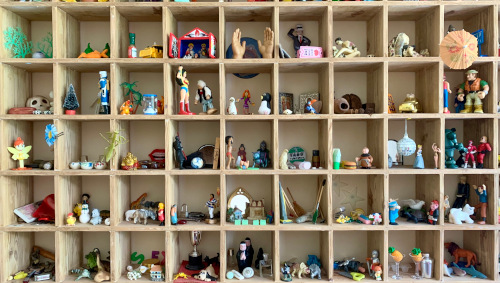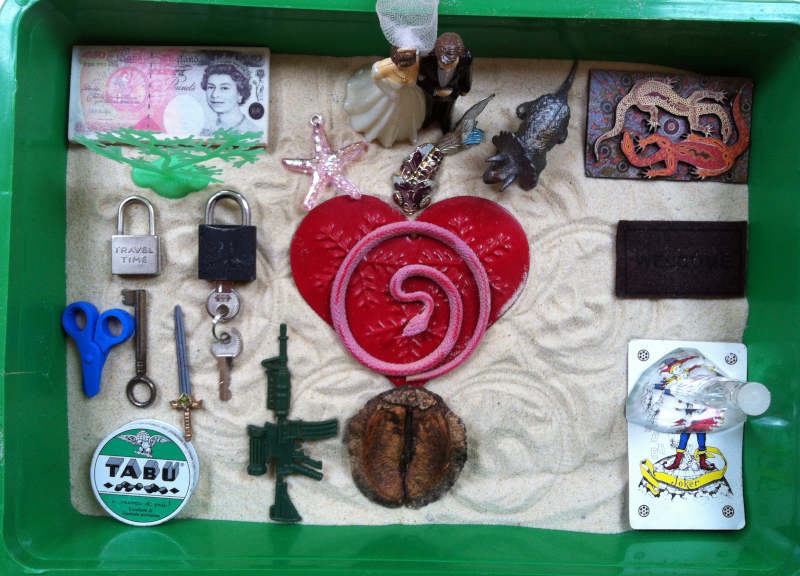
What is Sandtray, how does it work?
Sandtray consists of a container with some sand and a selection of little objects used as a therapeutic process. Sandtray is also a dynamic and creative tool to explore a block or a question, or to help discover a new direction.
During a session a question, feeling or issue is framed for exploration. The client is invited to choose from an extensive collection of miniature toys and objects. Using a shallow tray with sand, they create a small world in any configuration that feels right. Allowing and trusting the subconscious is part of this process. This may only take a few minutes. Then the client examines and describes the tableau. Lilliana will make observations and ask questions but generally avoids interpretation of the sand-world.
“Often the hands will solve a mystery that the intellect
has struggled with in vain.”
C.G. Jung
Everyone is encouraged to play with the sand exactly as they wish. One might create a bird’s eye landscape, others make worlds with objects and figures. Some create dramatic play that tells a story. There is no right or wrong – its play.
Why sand tray is helpful
As young children we learn to resolve developmental issues and work through conflicts using play. Physical play is vital to our development; toys and games provide engagement with others, and a way of being with one’s self. Acting out characters and situations are key to early self-expression and self-reflection, and messing with sand and water provide a tactile, kinesthetic satisfaction.
As we grow older and we learn to communicate our thoughts and feelings, and to verbally resolve our differences. Effective as it may be, talking can also keep us into our heads, whereas the sandtray can help to reconnect us with our imaginative, playful selves.
Sandtray can provide another perspective on the familiar or suggest new potential. There is no mystery to the process. It simply allows us to tap into our instinctual, intuitive self – a great adjunct to cognitive thinking. Conscious and unconscious aspects of the psyche interact during play, and the meaning emerges as the client experiences and shares it. The outcome is often a feeling of rightness for the client; a situation may be revealed, now obvious, or a resolution occurs on an entirely symbolic level.
Sandtray is good for accessing unconscious drivers, and for exploring options. Originally designed for working with children, this technique has been found effective with pretty much everyone; individuals, couples and small groups. It can form a creative part of brainstorming or problem solving.
Sandtray was originally developed by the Swiss therapist Dora M. Kalff (1904–1990) and British pioneer of child psychology, Margaret Lowenfeld (1890 –1973).






 0779 226 7670
0779 226 7670


